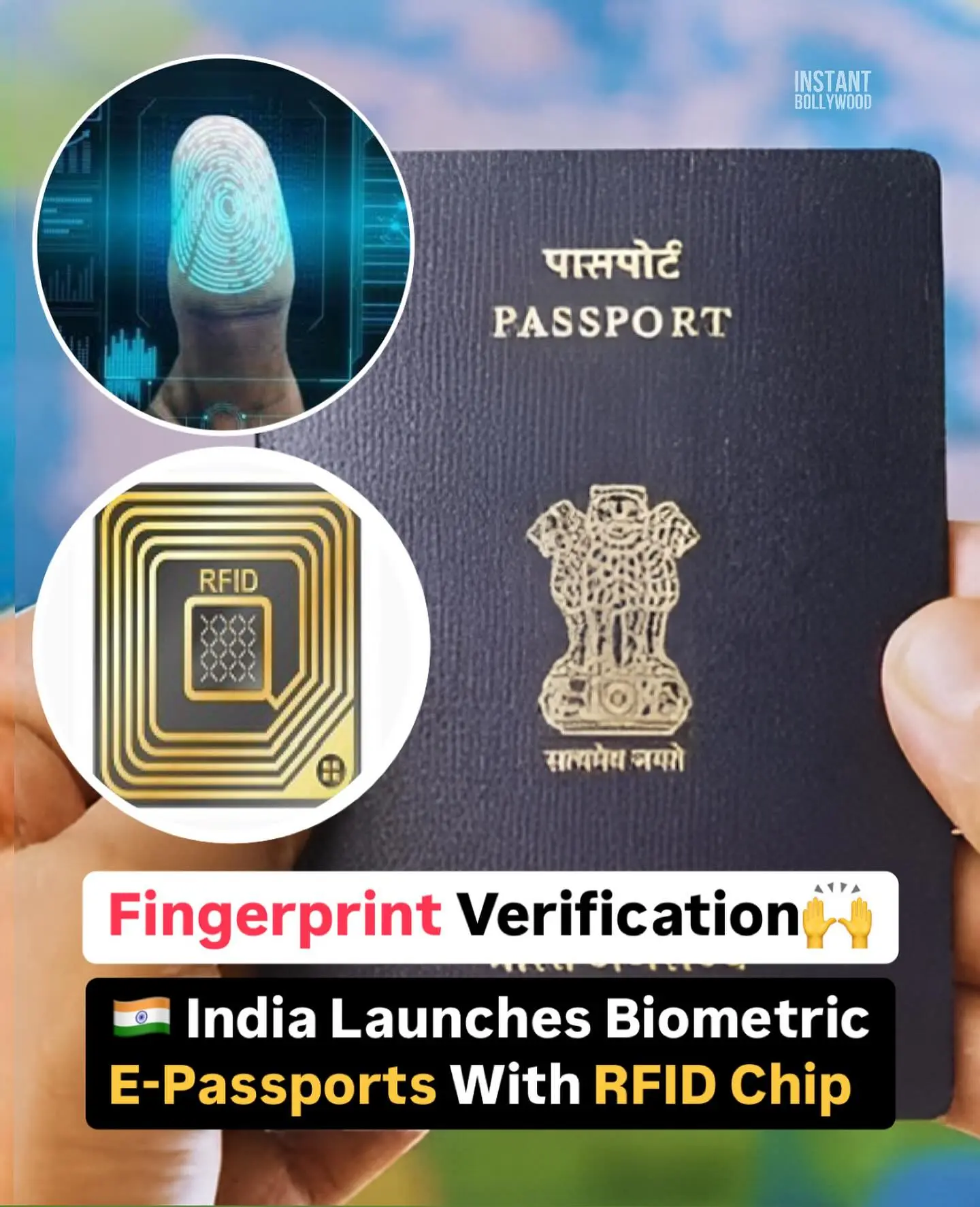India Launches E-Passports With Enhanced Security Features
The government introduces tech rich passports featuring secure biometric data & encryption

Image: Instagram
India’s latest move to strengthen national security and protect citizens’ personal data has taken center stage with the launch of electronically enhanced passports. These e-passports are not just your conventional travel documents – they are a modern fusion of biometric technology and encryption protocols designed to curb passport fraud and misuse.
Secure Passport Technology
The newly introduced e-passports come equipped with a built‐in RFID chip and an antenna integrated seamlessly into the cover. This chip securely stores the holder’s personal and biometric information, such as fingerprints and facial recognition details. A distinctive gold symbol on the front cover is a telltale sign of these advanced security features. The use of such a symbol reassures citizens and border officials alike that the document meets global standards.
Advanced Encryption Protocols
Underlying the technology in these passports are several layers of encryption protocols. Security measures like Basic Access Control (BAC), Passive Authentication (PA), and Extended Access Control (EAC) are integral to the system. These protocols ensure that the sensitive data stored within the passport remains protected from unauthorized access and tampering. By encrypting the biometric and personal data, the government aims to significantly reduce the chances of duplication or fraudulent use of passport credentials.
The new system reflects India’s commitment to leveraging technology to not only streamline travel but also defend national identity. With rapid advancements in digital security, the decision to integrate high-tech features into everyday documents like passports marks a significant evolution in document security.
Benefits For Citizens And Border Security
A major advantage of e-passports is the enhanced security they promise. By embedding complex security features, the document helps prevent identity theft and illegal replication of passports. For citizens, this not only means more secure travel experiences but also a reduction in the bureaucratic hassle associated with fraudulent document disputes. Officials at border checkpoints benefit from quicker and more reliable methods of verifying identity, which leads to smoother and more secure international travel.
Government spokespeople have highlighted that the aim of introducing e-passports is to safeguard personal information and to maintain a robust, tamper-proof record of citizen credentials. The integration of biometric data ensures that even if a physical copy were to be duplicated, the inherent security measures would render any counterfeit document useless. This state-of-the-art strategy aligns with global benchmarks and reinforces India’s position as an innovator in the realm of document security.
Global Standards And National Implementation
In adopting these robust security protocols, India joins a growing list of nations that have upgraded their passport systems to remain ahead of digital threats. By adhering to international standards, the e-passports not only serve as a secure travel document but also as a symbol of the country’s commitment to technological progress.
A visual representation of these features was shared on social media by Times of India, reiterating the gold-accented cover specifics and the embedded RFID technology. The Instagram image (credit: @timesofindia) showcases the passport’s unique design element—the gold symbol—indicating its electronically enabled nature. This image has resonated with the public, as it clearly illustrates the blend of traditional passport design with futuristic technology.
A Step Toward A Safer Future
With the launch of e-passports, the government is paving the way for increased trust in travel documents. These passports are expected to make identity verification both more efficient and secure at international borders. Experts believe that the move will reduce security risks and help combat identity fraud, which has been a growing concern in today’s digital age.
Aside from enhanced travel security, the e-passport initiative is also seen as an investment in national identity management. The encryption protocols ensure that individual data is carefully guarded, reducing the risks associated with data breaches. Moreover, the technological innovations embedded in the passport underscore the government’s commitment to modernizing public services and adapting to the demands of a digital future.
While this initiative is primarily focused on enhancing security, it also promises significant administrative benefits. Faster processing times at checkpoints and the potential for smoother immigration processes indicate that these passports are not just about safety – they are about efficiency and convenience too.
The introduction of e-passports marks a new chapter in India’s journey toward digital transformation. As the world becomes more interconnected, the need for secure identification methods becomes increasingly critical. With this upgrade, India aims to maintain a robust defense against emerging fraud risks while ensuring that its citizens enjoy the benefits of streamlined and secure travel.
This development highlights a broader trend of governments worldwide embracing technology to protect sensitive personal information. By melding traditional document design with modern encryption techniques, India not only meets global standards but also sets an example for other nations to follow.
The evolution of passport technology is a testament to the continuous efforts by governments to safeguard their citizens in an increasingly digital world. As e-passports become the norm, travelers can look forward to a future where their identities and personal details are better protected, ensuring smoother international journeys and fortified national security.
Read full bio of Glendon Moss


















